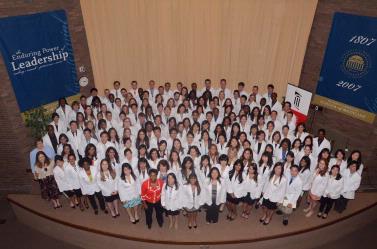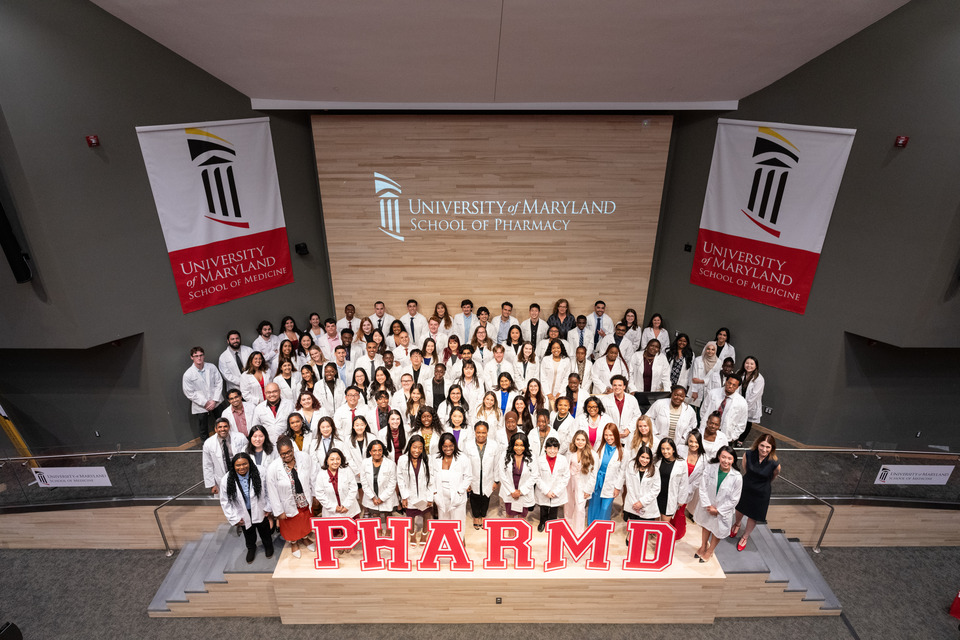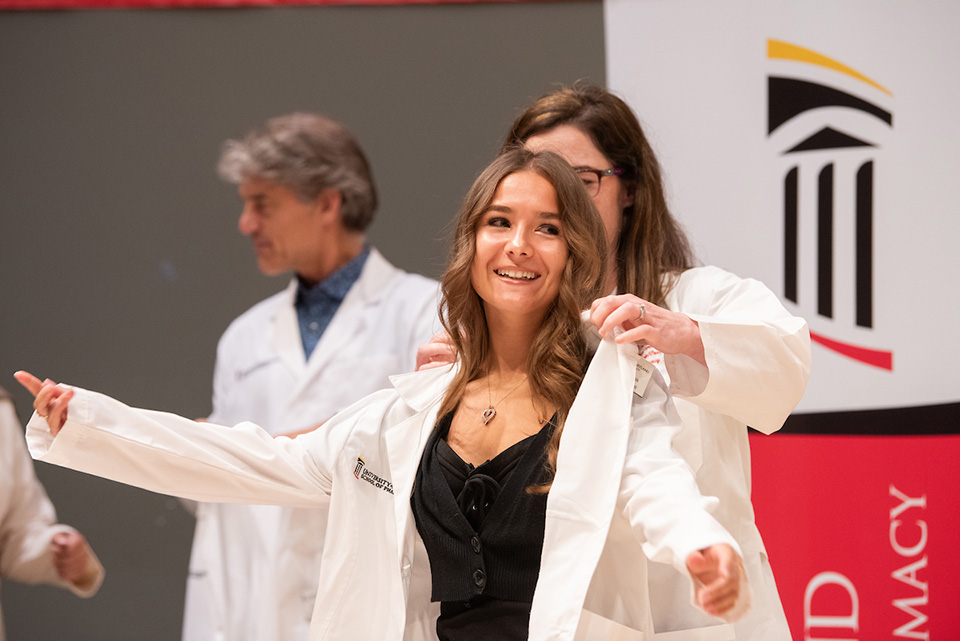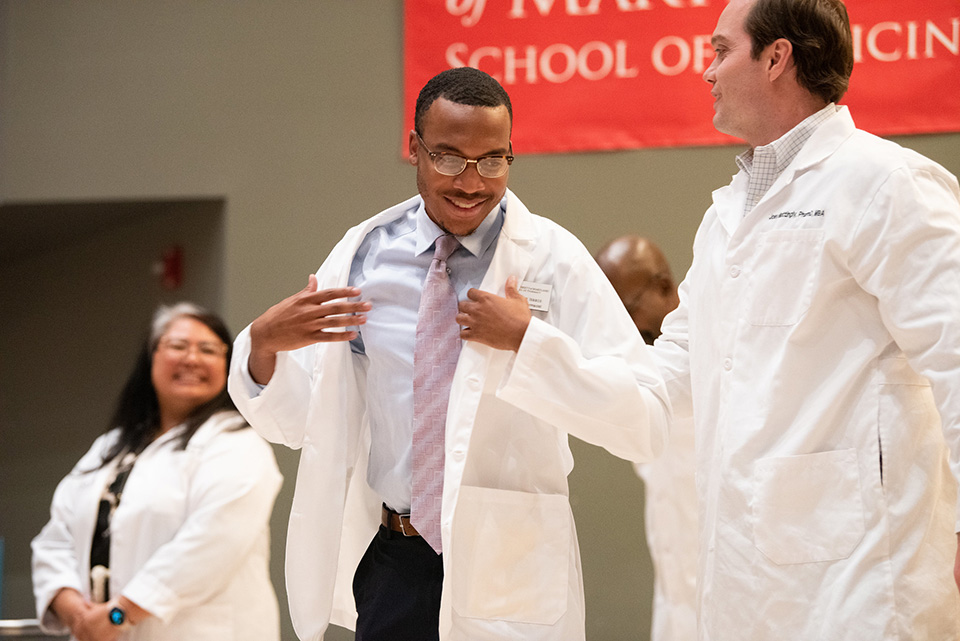Class of 2015 Welcomed to the School of Pharmacy
Annual White Coat Ceremony provides traditional welcome to the pharmacy profession.

By Steve Berberich
September 7, 2011
Families and friends watched with pride and keen interest as the 164 students of the Class of 2015 at the University of Maryland School of Pharmacy eagerly strode to the stage smiling broadly to slip on a pharmacist’s white coat for the first time.
The traditional White Coat Ceremony marks the students’ entry into the profession as student pharmacists.
Dean Natalie D. Eddington, PhD, FAAPS, said, “You have chosen well in selecting the University of Maryland School of Pharmacy for your pharmacy education, as we are a top 10 institution.”
Though the proceedings on Aug. 26 were new to most family members, one particular mother who watched her daughter receive her white coat was very familiar with the ceremony. New student pharmacist Alexandra McPherson is the daughter of Mary Lynn McPherson, PharmD, a professor of pharmacy practice and science at the School of Pharmacy. As a child, Alex would relish any chance she’d get to go to work with her pharmacy professor mom. “I couldn’t wait to go hang out with the pharmacy school kids,” says Alex. “Now, I’m one of them and couldn’t be more excited to be here. I debated many paths within health care, but am confident that pursuing a career in pharmacy was the right choice. However, when it came to choosing a school, there was no question – University of Maryland School of Pharmacy was the school for me.”
McPherson found out “late in the game” that her daughter was going to pursue pharmacy, even though “she grew up being exposed to pharmacy all her life.” Her daughter first earned a degree in international business from the University of Maryland Robert H. Smith School of Business. “My husband thought Alex was going to follow in his footsteps since he’s an accountant,” McPherson says. “But Alex went on to earn a master’s of public health in international health with an emphasis in pharmaceutical assessment, management, and policy from Boston University’s School of Public Health.
“I suggested pharmacy school several times, but it was still a pleasant surprise when she told us she thought she wanted to pursue pharmacy,” says McPherson. “While she’s still interested in drug policy, two weeks into pharmacy school she already says she wants to work directly with patients. She has a kind, compassionate presence, and I think she would do well working one-on-one with patients.”
Dean Eddington advised the new class, “The landscape of how health care is provided is changing quickly and in dynamic ways. It is truly a transformational time to be a student pharmacist because you will play a significant role in modifying pharmacy practice under health care reform.” She added, “Now, a pharmacist is an integral part of a patient’s health care team and often the most accessible member on that team. As the team’s medication expert, a pharmacist provides valuable information on pharmacotherapy, drug-to-drug interactions and potentially dangerous side effects, and provides valuable feedback to other health care professionals.”
Guest speaker and pharmacist Edith Rosato, RPh, IOM, picked up the theme, saying, “My hope is that as you begin your journey through the profession and begin to interact with patients, you too will begin to feel the same fulfillment and accomplishment that I had.” Rosato is senior vice president of pharmacy affairs for the National Association of Chain Drug Stores and president of that association’s foundation.
Rosato reminded the students that “the important care” provided by today’s pharmacist includes immunizations, counseling on prescriptions and over-the-counter medications, diagnostic screenings, as well as wellness services.
Eddington also told the students, “These numbers indicate what a defined and important role you will have in health care:
• “Nearly 45 percent of the population has one or more chronic conditions that require medication
• “The lack of medication adherence costs Americans more than $290 billion per year.
• “Three out of four Americans do not take their medicine as prescribed.
• “Almost 125,000 people die every year because they don’t take their medications as directed.”



